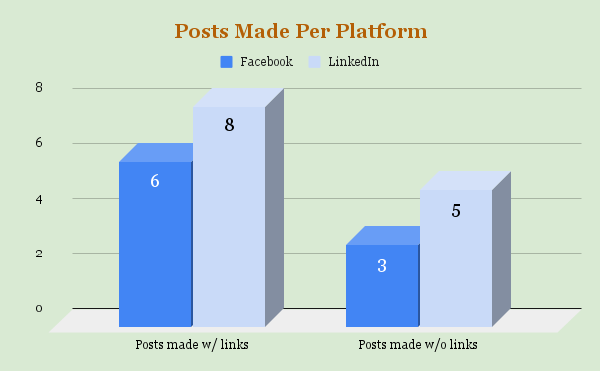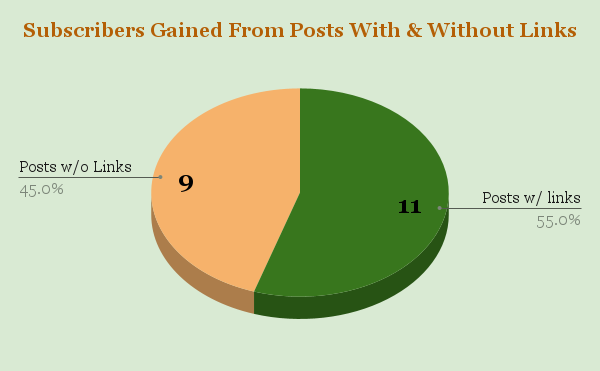How To Double Your Email List Without Really Trying
A few weeks ago, I made a relatively innocuous post on my Facebook and LinkedIn pages. To the untrained eye, this post looked like an objectively bad attempt to market my newsletter. However, the untrained eye would be surprised to hear that this post actually caused my subscriber list to more than double.
Even if you’re not a professional digital marketer, the phrase “more than double” should sound like a lot. It should sound like a lot because it is a lot. If you were my boss and I came to you and said “Hey boss, I more than doubled my output last week, is that cool?” you’d lose your mind. You still wouldn’t give me a raise, but that’s because we live in a capitalist hellscape where employee value is no longer linked to individual contribution, not because you’re a bad boss.
Point is, I did something “right,” or, at least, something that produced the “right” outcome. Anytime this happens, it’s worth stepping back and analyzing what exactly happened. I’ve spent the last week or so digging into the analytics of my social marketing efforts for the newsletter, and what I discovered was nothing short of fascinating.
So here’s an in-depth look at how exactly I doubled my list in one social post, an important lesson about social analytics, and some practical tips to help you replicate these results.
the post
On April 21st, just before noon local time, I made a post to my personal Facebook and LinkedIn pages. It was the same post on both outlets, with 2.5 sentences and a link. Importantly, I did not ask people to subscribe. In fact, I didn’t even mention what the newsletter was about. I didn’t list out the benefits of subscribing or offer any incentives. I didn’t include a juicy pull-quote from the newsletter. I didn’t even schedule the post for an optimized publish time or comment on it from another page to get the engagement going.
Somehow, this silly little post managed to increase my subscriber list by 125%. To put that differently, I went to a brewery with all of the best social media marketing advice on tap, and asked for a bud light out of the well. Now I’m drunk and my tab was only $4.
The lead up
I spend a lot of time on social media, but I don’t post often, at least not on Facebook or LinkedIn. Because I don’t spend much time posting, I spend a lot of time observing. Anytime I’m scrolling my feed on [insert app here], I’m keeping note of what I like, what I don’t like, what seems to be working, what seems to be trending, what’s standing out, etc. Often, when I do post, I use it as an opportunity to test out a theory or a strategy I’ve picked up along the way.
On Facebook and LinkedIn, I’ve noticed a lot of conversation around post reach. Typically, the conversation centers around one question: “Should I include links in my posts?” You’ll get a different answer to that question depending on who/when/where you ask. Some say including links will kill your reach. Others say that you can’t convert followers to buyers without a link. Despite the strong opinions, no one seems to have a definitive answer. (except for me, keep reading.)
For the last 6ish months, I’ve been strategically posting to my profiles, fishing for newsletter subscribers. In some posts, I included a link to subscribe. In others, I did not. I also played around with post language, timing and other additives like pictures or reshares of other posts. After just under 200 days of observation, I took everything I learned and crafted the post that doubled my list.
The Data
Believe it or not, I made a whole-ass spreadsheet for this blog. I’m not going to include the whole thing, but email me if you want it. For the rest of you, here’s what’s important. Over 196 days of tracking…





If you’re not an interpretive-data person, what’s worth noting is that including or excluding a link is (in this data set) irrelevant to a posts success. On Facebook, 66% of my posts included a link, those posts brought 61% of my engagement and 55% of my subscribers. On LinkedIn, 38% of my posts did not include a link, those posts brought 35% of my engagement and 45% of my subscribers. If there was a significant difference between posts with links and posts without, I’d expect my 66% of Facebook posts to bring 80%+ of my engagement, or my 38% of posts on LinkedIn to bring in less than 20% of my subscribers.
Now it’s important to clarify, this data does not include the above post that brought me the big subscriber increase. When you include that post into the data, it skews things heavily towards including a link, but that’s an outlier and we don’t make generalizations based on those. In fact, that post alone accounted for 27% of my total engagement across the entire period. It would be bad data science to judge the effectiveness of posting links on a single outlier when the rest of the data doesn’t support it. In other news, water is wet and vaccines don’t cause autism.
So if this post succeeded independently of whether or not it had a link, why did it do so well? What wizardry did I imbue into this stupid social post that doubled my list? I’ll give you a hint, it doesn’t have anything to do with pictures or reshares either.
The Secret
Make shit people want. That’s it. That’s why this post worked so well and why, despite everything that’s frustratingly wrong with it from a marketing perspective, it doubled my email list.
Think of the average social media user. They log on, they scroll, they’re bombarded with ads and suggested content when suddenly, the rare post from a person they know pops up. What does that person want to see? What does that person want to engage with? From my observation I boiled it down to 3 things:
Personal, casual language
Easy, mindless opportunities to engage
More pretty picture than text
If you’ve read my ebook, (which you can get for free at this link) you should know that social media cares about one thing: screen time. Social media doesn’t care about you. Facebook doesn’t want your business to fail or succeed. LinkedIn doesn’t want to show or hide your newsletter. Social media just wants people to use it more.
With all the above considered, and as counterintuitive as it may seem, I determined this simple post was the best way to market my newsletter. No pitches, no incentives, no real information, just a casual greeting, a little bit of vulnerability, a reason for people to engage with the post, and a pretty picture.
The Conclusion
The internet is broken. If a product requires you to go against what is intuitive to use it successfully, that product is either broken or a bad product. (I’d argue that the internet is both broken AND bad, but that’s not the point.) We can’t change the Internet, but my hope is that we can change our understanding of it.
The internet doesn’t want your keywords, it wants content that encourages people to click buttons. Facebook and LinkedIn don’t care about the links in your posts, they just care that people are using their apps. Social media no longer exists as a churning sea of content where anyone and anything can rise to the top. Social media is a machine built to maximize ad revenue. That’s bleak, but it’s true.
So, if that’s true, what should we do? My suggestion is to stop putting the Internet and Social Media on a pedestal. Value these things the way they value you, use them when it’s beneficial for you, and log off as soon as it’s not. Because if the Internet isn’t going to change, maybe it’s our perception that’s broken.
If you enjoyed this blog, consider subscribing to my newsletter! One email a week and no spam, I promise. It will keep you updated on when I write more things like this and all of the other content I produce. Subscribe for FREE. 